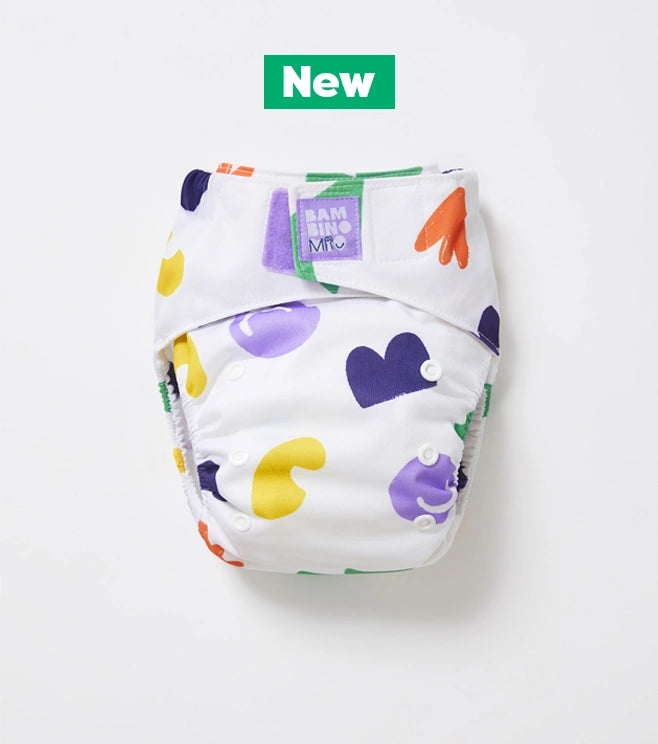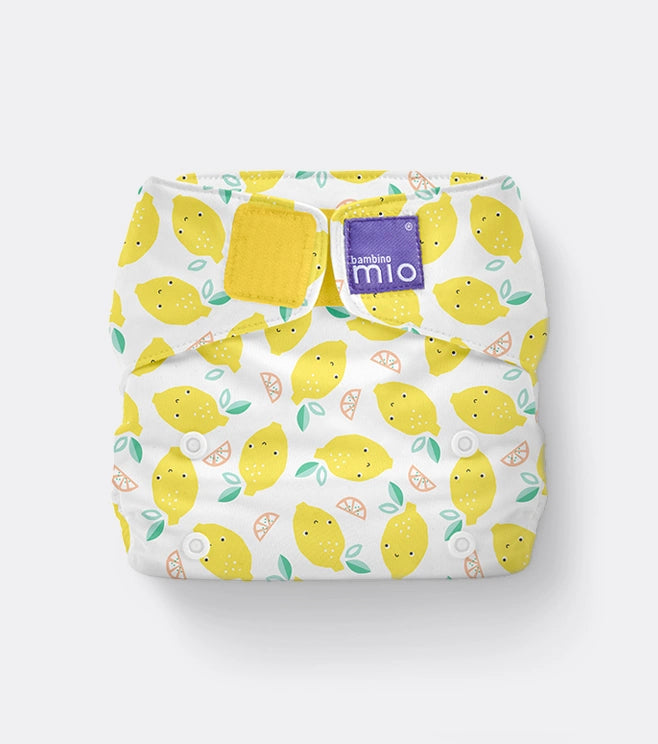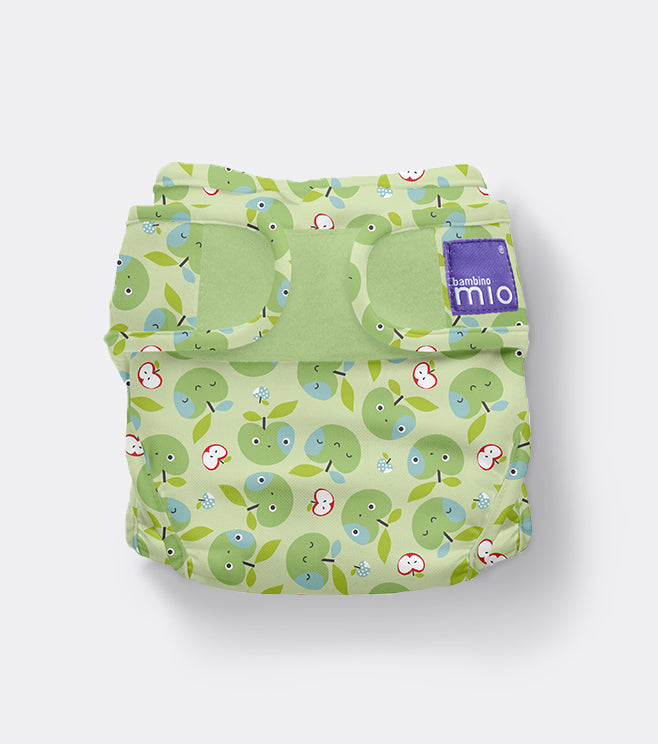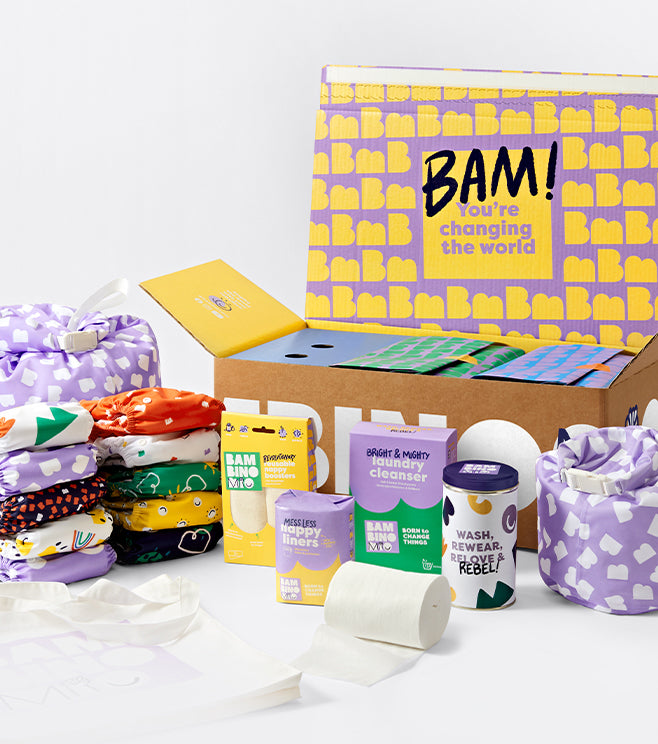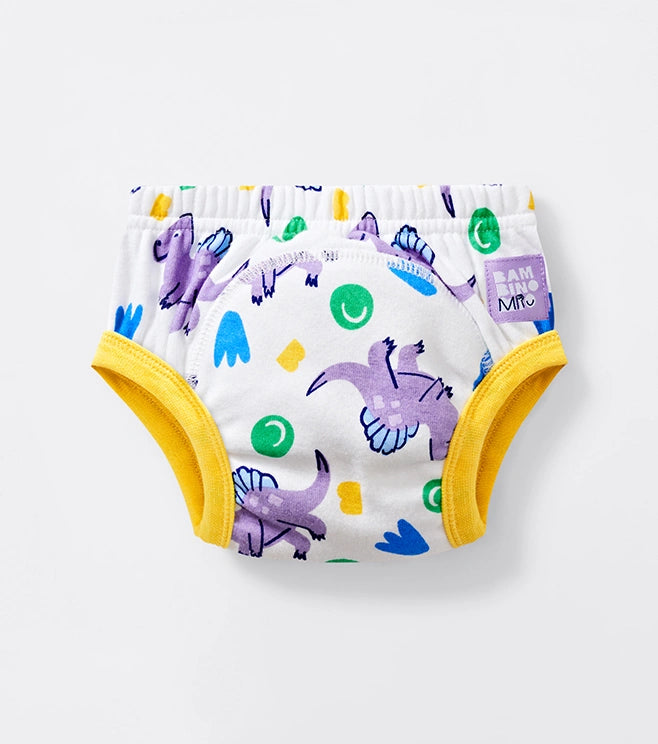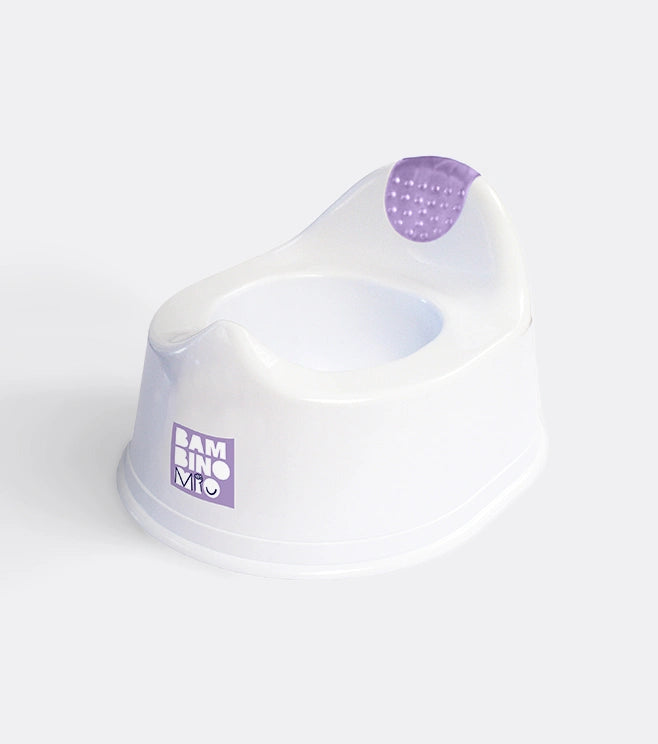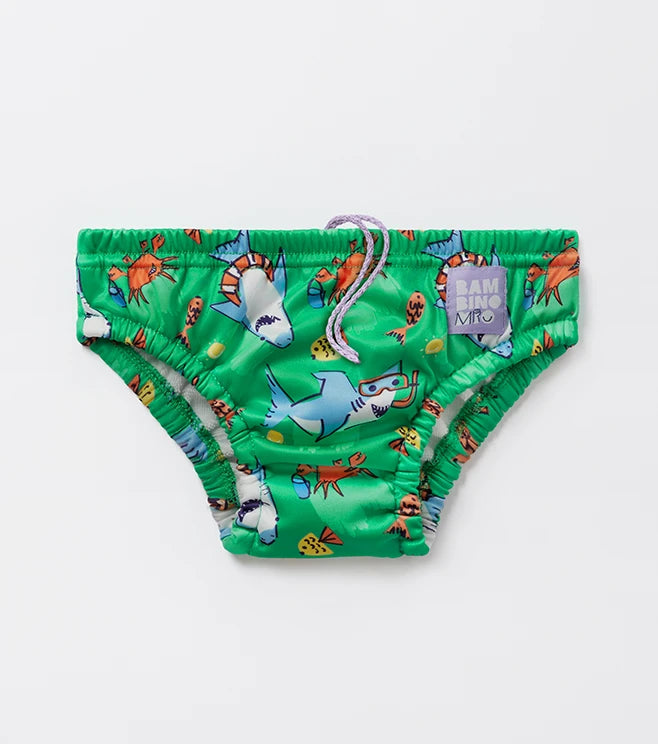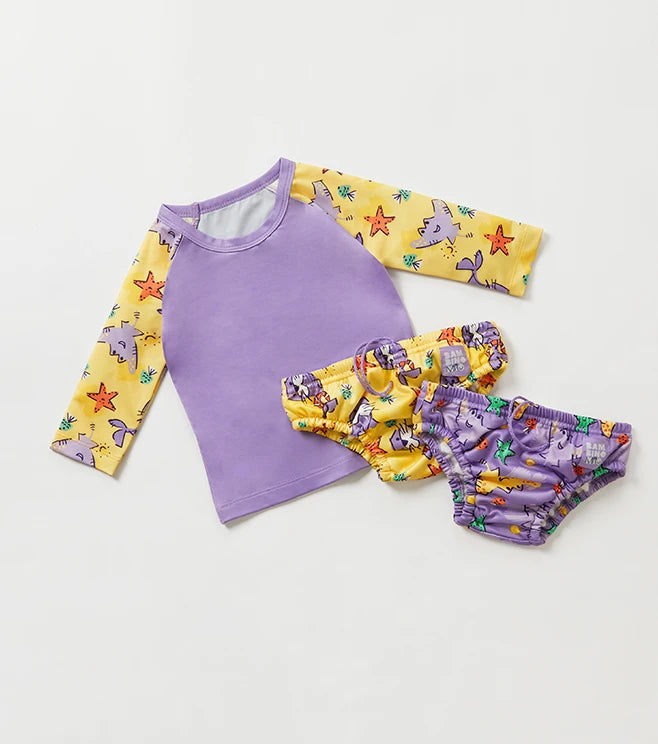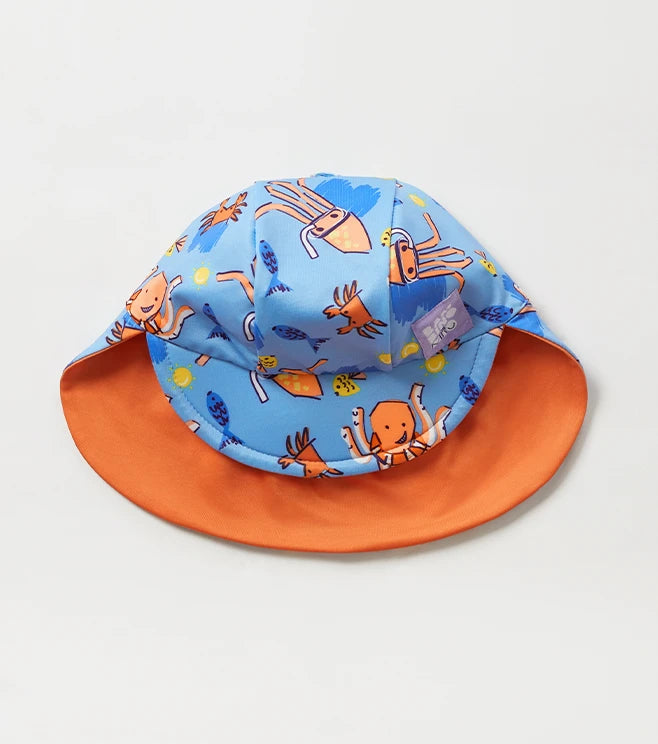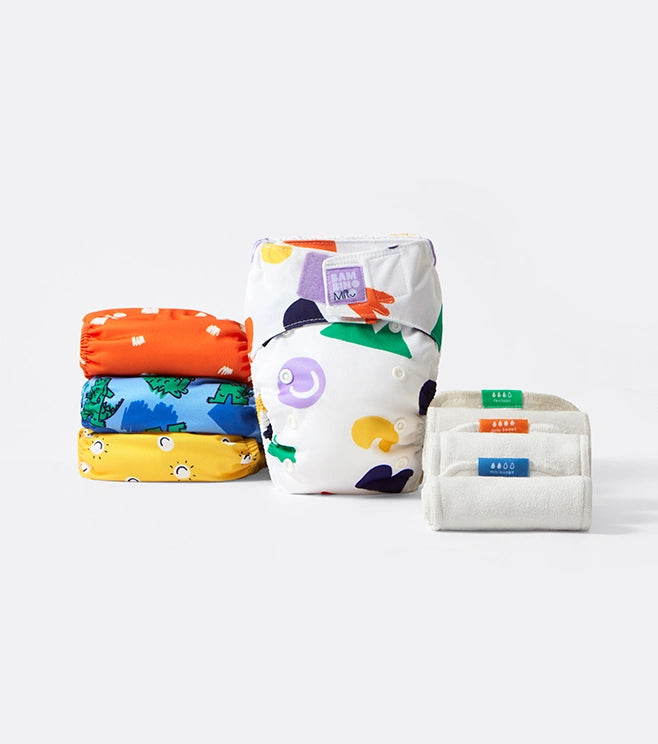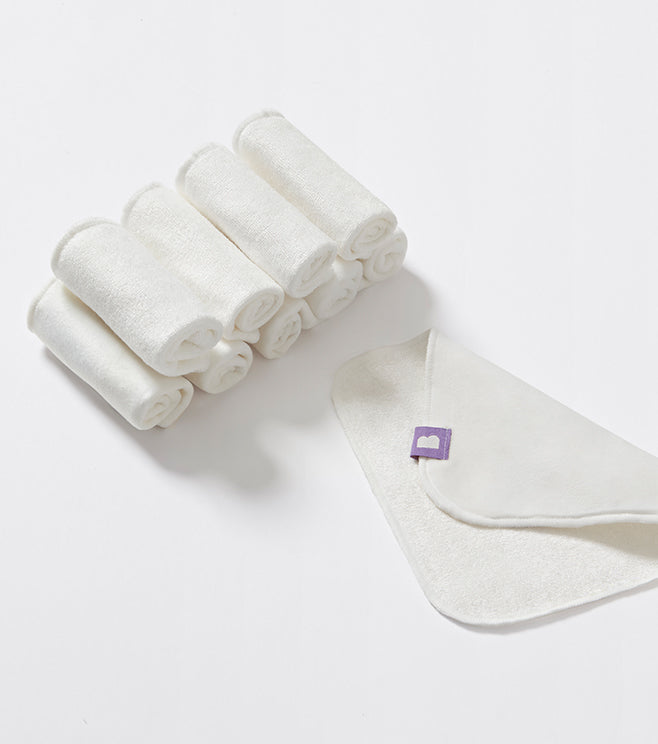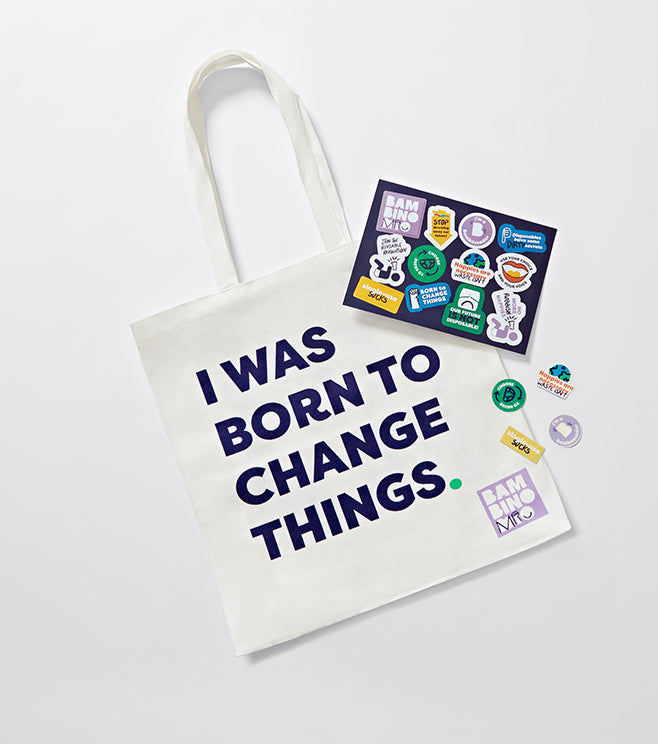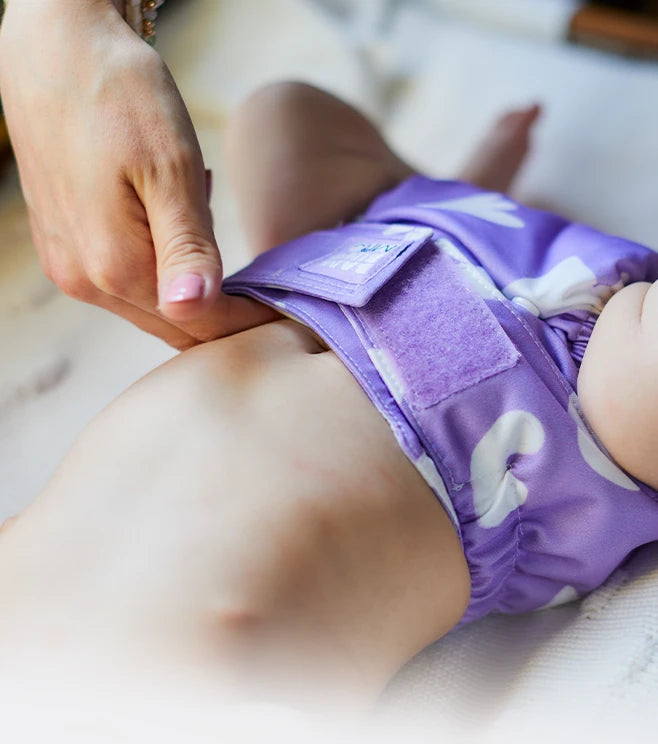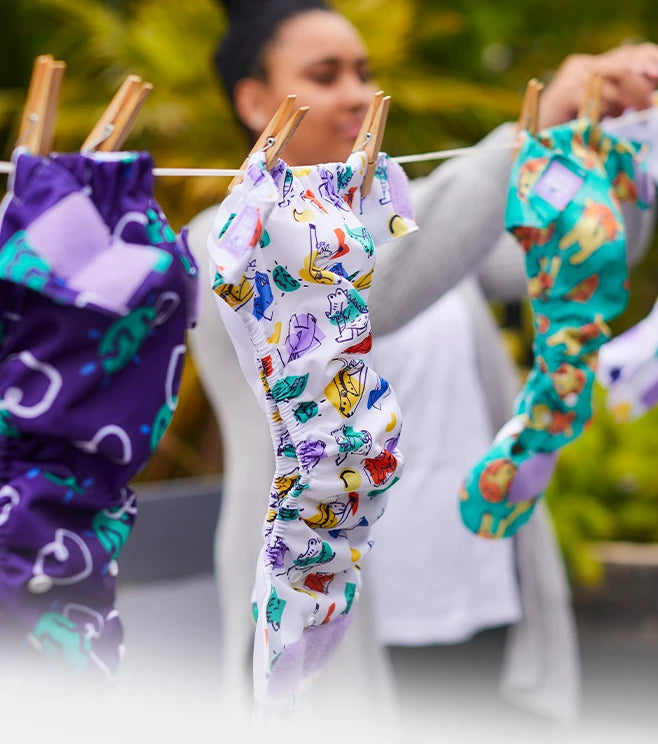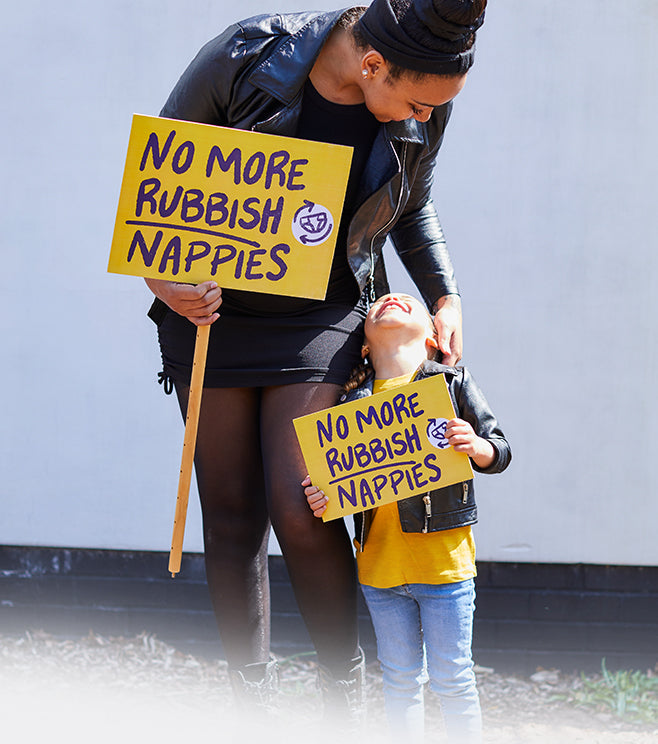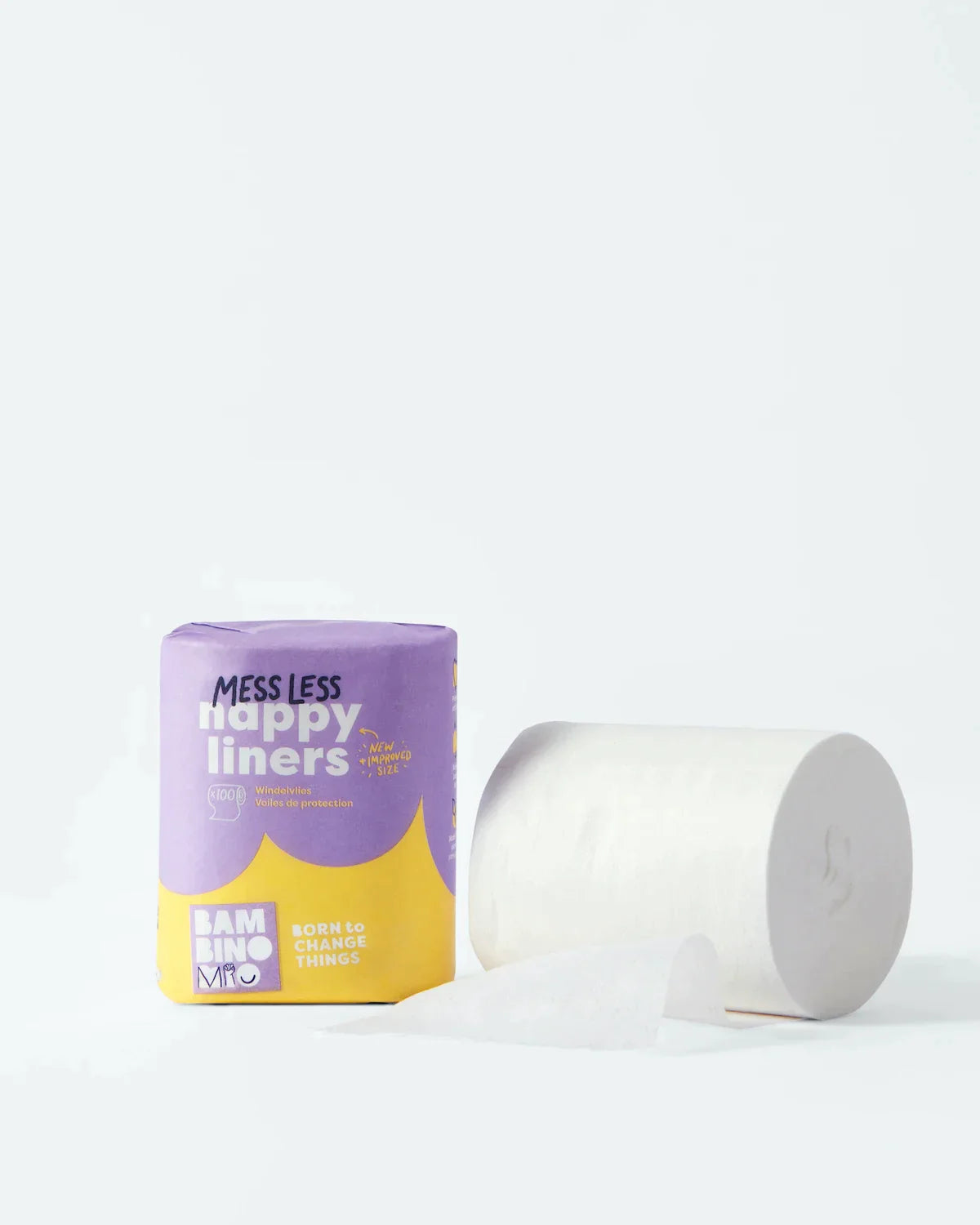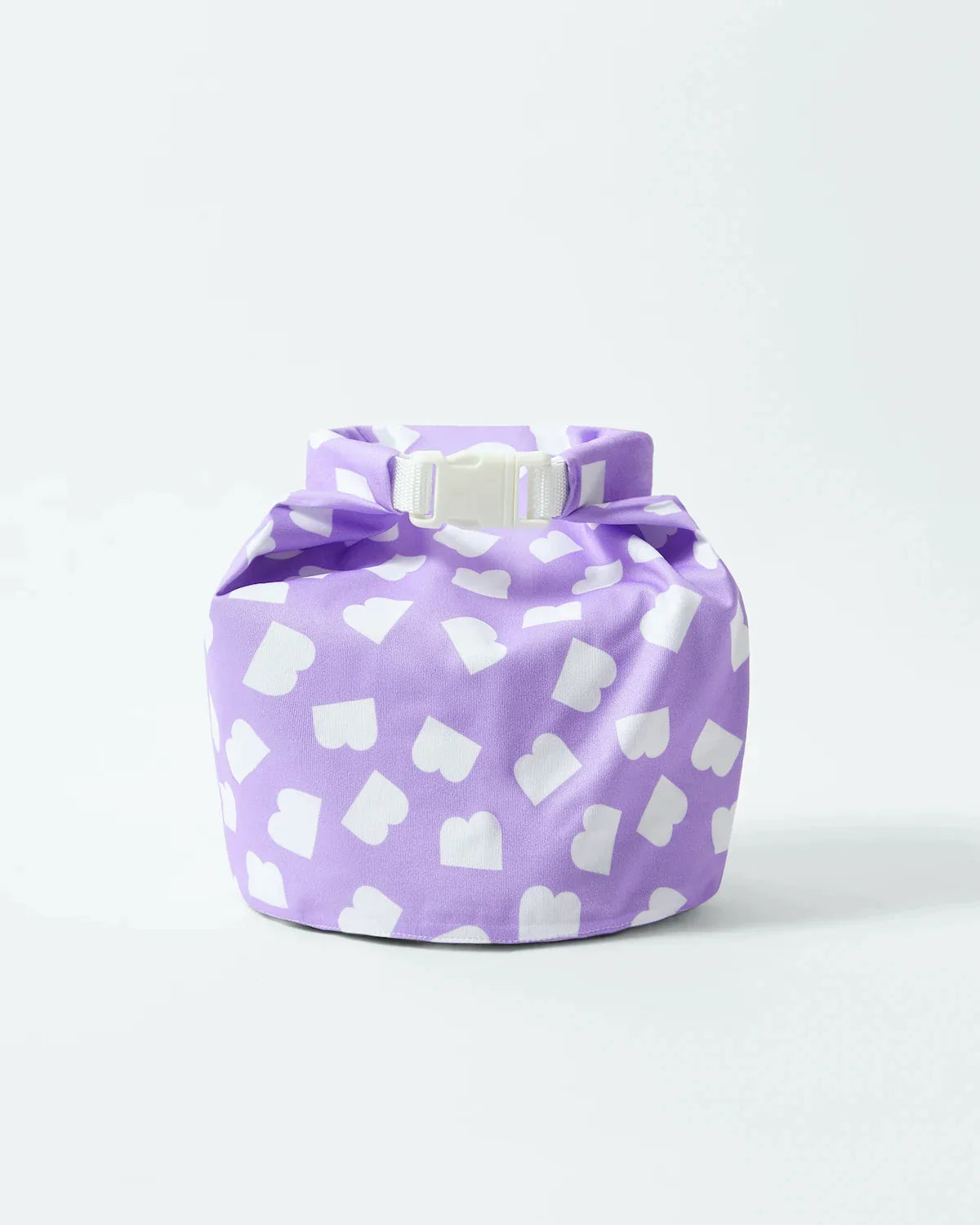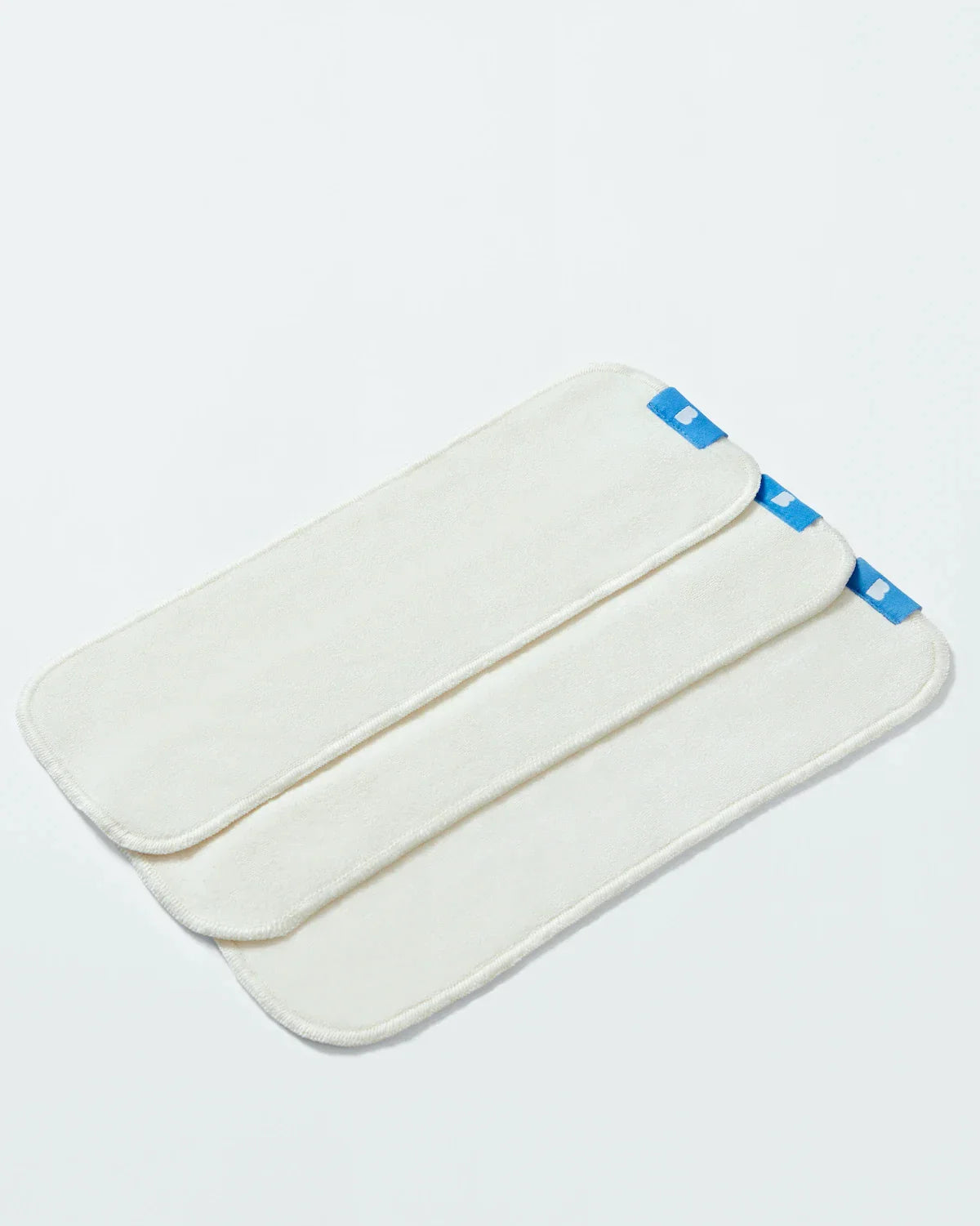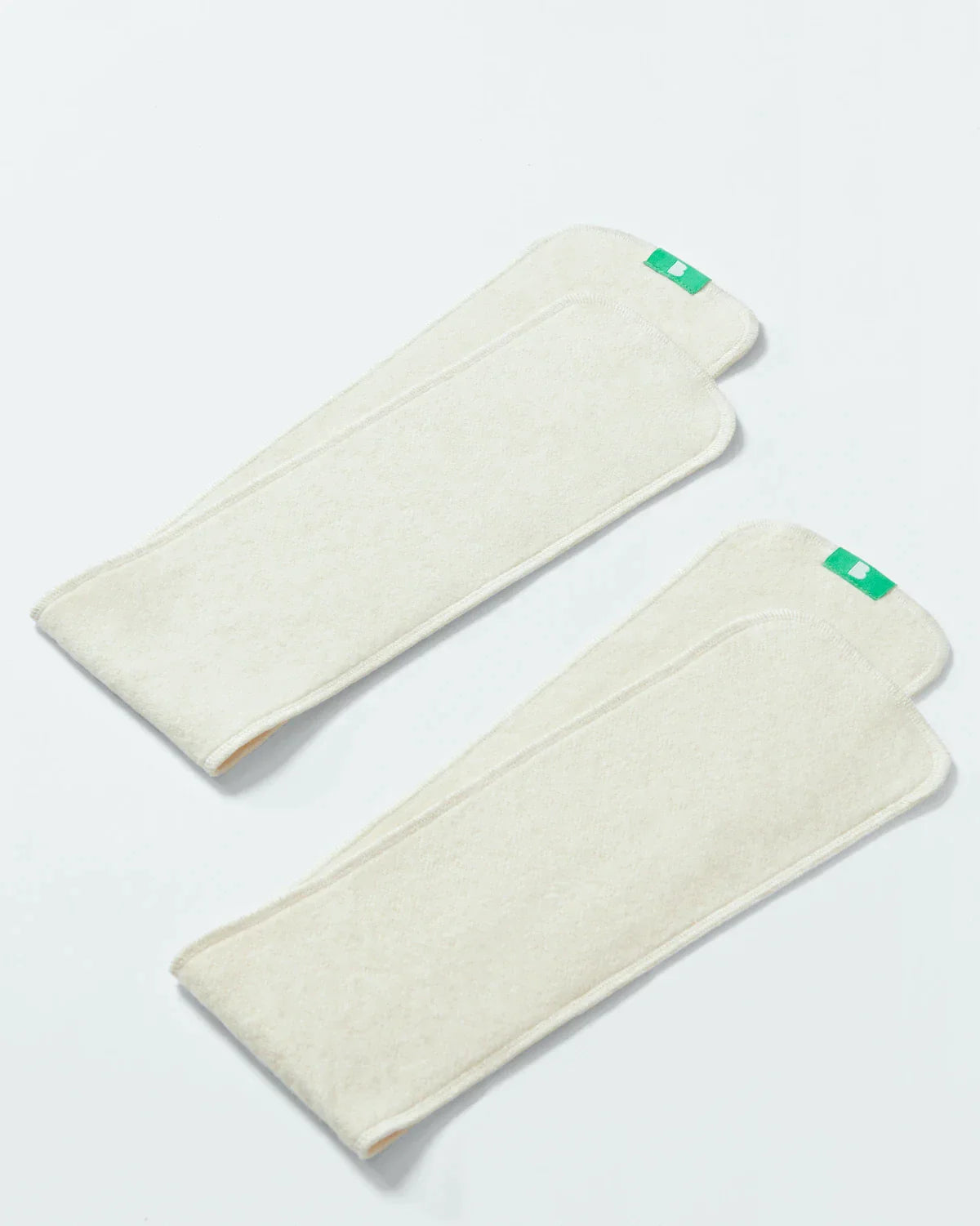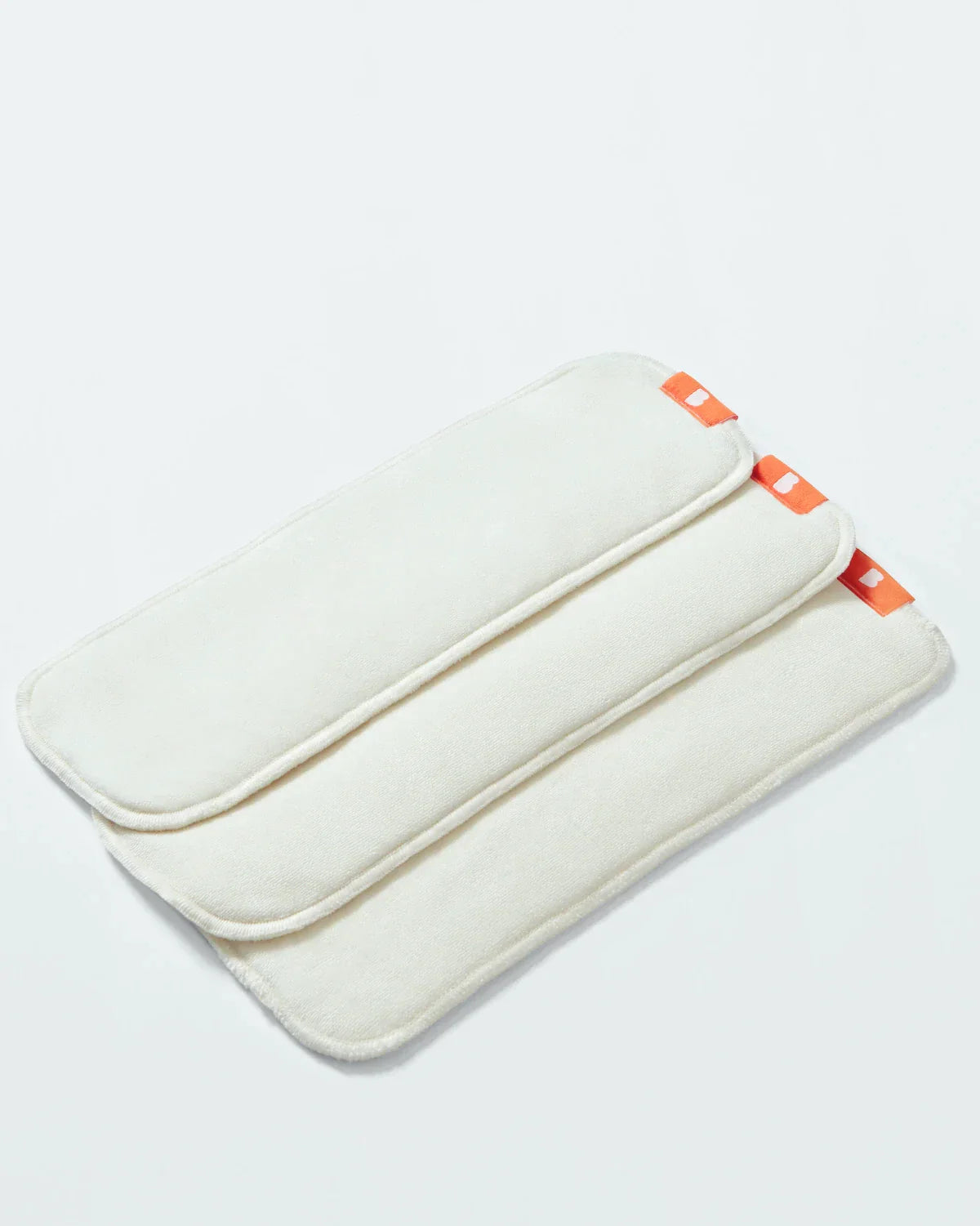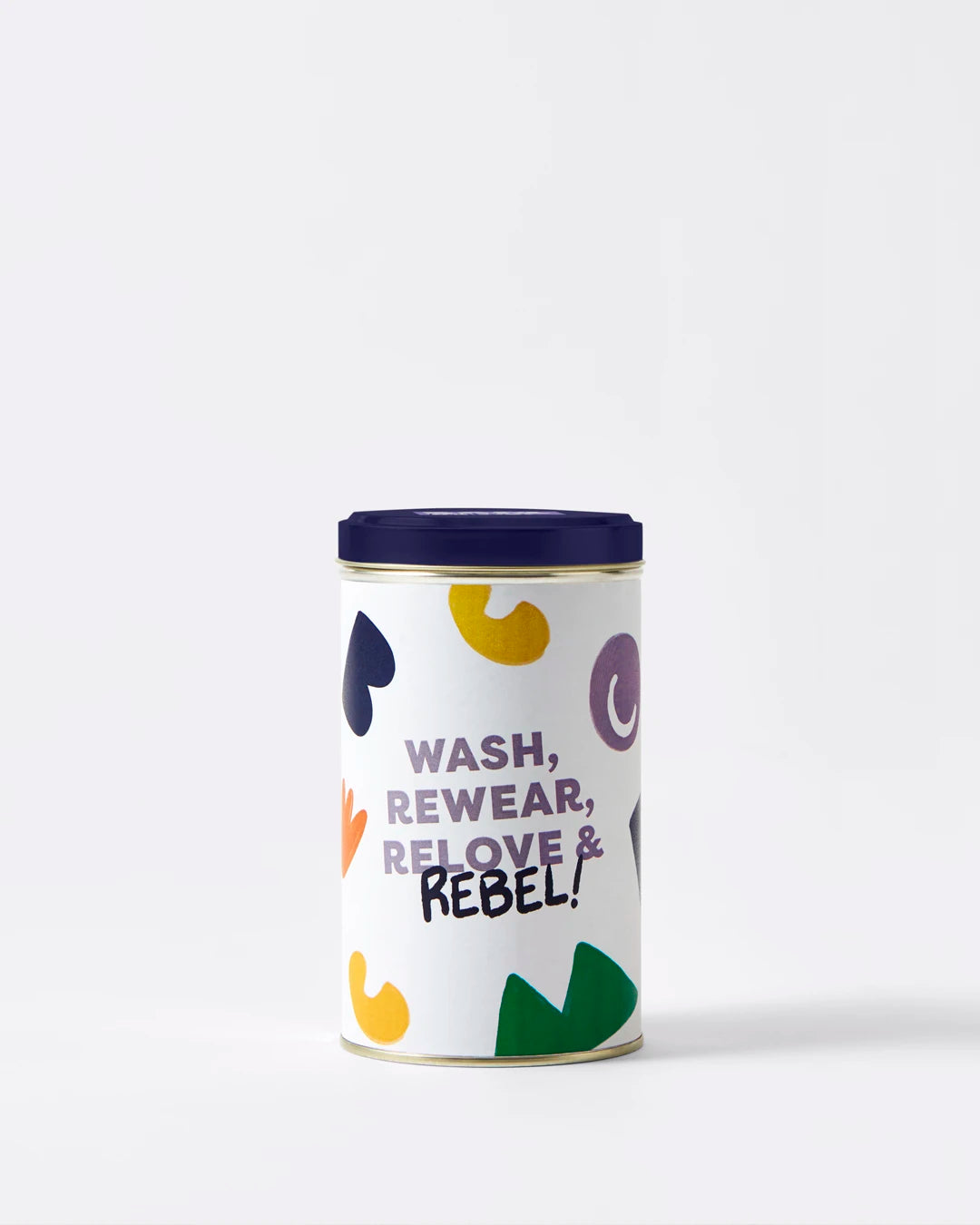What Happens to Disposable Nappies After You Throw Them Away?
Share Options
- Bambino Mio
- 12 / 07 / 2023
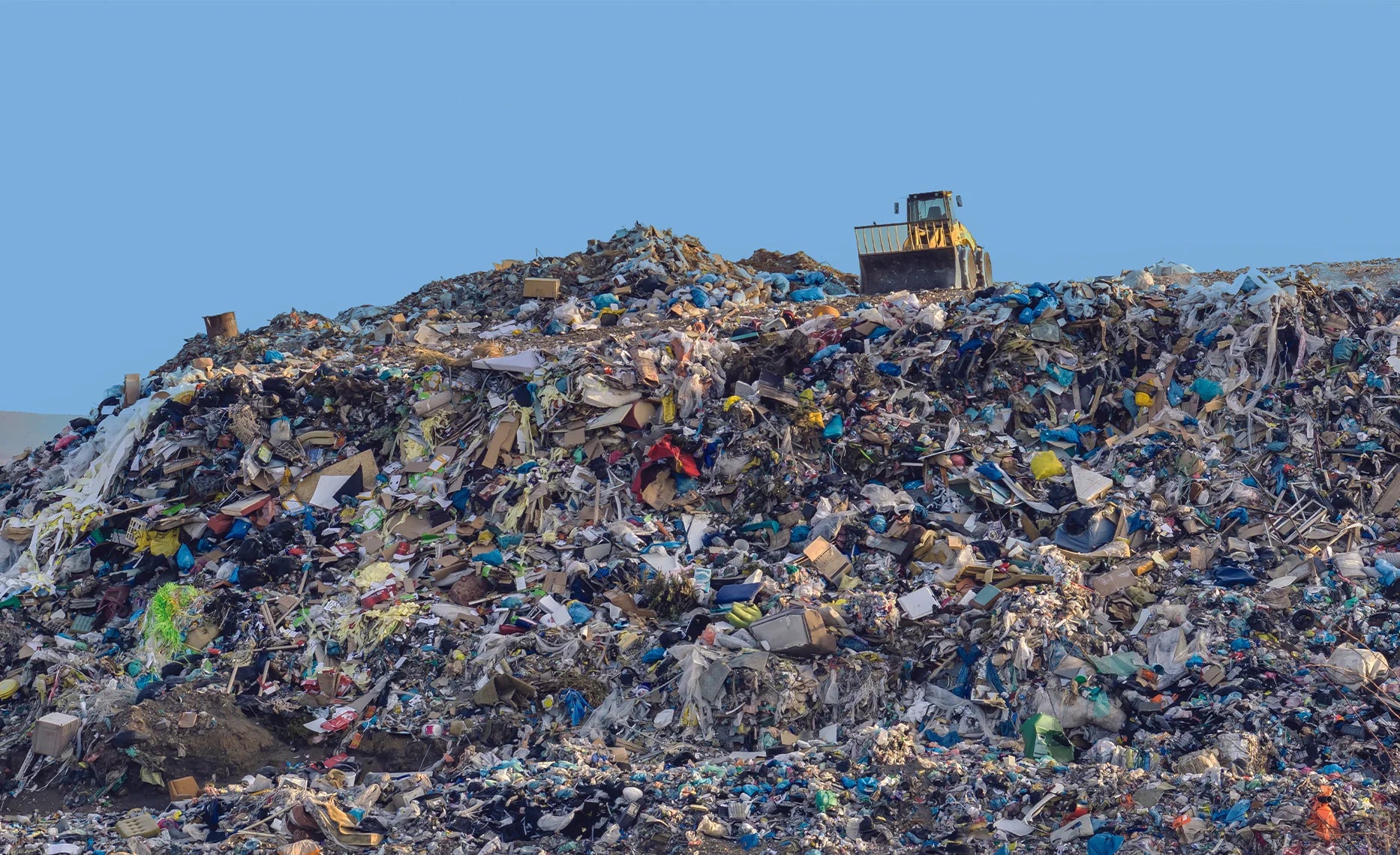
Around 8 million single-use nappies are binned daily in the UK(1), with almost all of them ending up in an incinerator or landfill. It’s small wonder that lots of UK parents are looking to reusable nappies to reduce their costs and their carbon footprint.
Reusable nappies can reduce carbon output by up to 40%
As long as parents wash and dry reusable nappies carefully - at lower temperatures and not in a tumble dryer - they’ll emit up to 40% less carbon over the time their child is in nappies than if they used disposables.
It seems that reusables are the answer, because instead of your baby going through up to 5,000 nappies until they’re toilet trained, you can simply wash and reuse the same 20 reusable nappies. You can, if you look after your cloth nappy pile properly, use it on your second or third child, reducing your overall greenhouse gas emissions even lower.
Disposable nappies can take 500 years to decompose
Discarded single-use nappies comprise around 8% of the UK’s annual waste disposal load. Once a nappy lands on a waste tip, it could stay there for up to 500 years (2), emitting various greenhouse gases as it slowly degrades; incineration also releases a huge amount of air pollution.
Eco-friendly disposables are only part of the answer
Even the so-called eco-friendly biodegradable nappies available these days take many years to degrade. Manufacturers claim these nappies can take as little as four years to decompose, the truth is that it can take a lot longer.
When these “greener” nappies hit landfill, they become compressed by subsequent layers of rubbish, which means they don’t receive enough oxygen to decompose in the promised timeframe.
It’s better to create less nappy waste in the first place
Whether a disposable nappy ends up mouldering for centuries in a landfill or it’s burned in an incinerator, a lot of its environmental impact and water consumption happens during its production. The disposables keep coming, too - remember that 5,000 figure?
Those (around) 5,000 nappies add up to 457kg of carbon emissions per child - mostly created during manufacture rather than during the decomposition process, but nevertheless…
Using washable nappies reduces that carbon output to around 344.5kg of carbon per child, with this CO2 coming mostly from laundering the nappies.
If you use your nappies on subsequent babies and use only energy-efficient washing machines, you maintain this lower figure for all of your nappying days. If you’re on a 100% renewable energy tariff or you have solar panels, your output is even lower.
Are biodegradable nappies truly biodegradable?
In a word, no. Not at the moment. Some components of these nappies, such as the Velcro tabs and the elastic cuffs on the legs and waist, are made from plastics. There’s also the absorbent gels, although some eco nappies are trying to replace these with similar but greener alternatives.
This is all well and good and eco-nappies might help to reduce plastic waste, but they could actually generate more methane as they decompose (unless they end up in an incinerator) and have an even greater environmental impact than their conventional counterparts.
Methane is the second baddie on the most wanted list when it comes to global warming and rotting landfill is a major player when it comes to emitting this greenhouse gas.
In fact, the National Atmospheric Emissions Inventory (3) says that the relative speed with which eco-nappies degrade means they release methane much faster than conventional nappies - decades rather than centuries.
All this makes reusable nappies the greatest nappy option for you, your baby, and our planet
Lower carbon, lower methane, less rotting landfill - what’s not to love?
To top it all off, reusable nappies are designed to be reloved! Once your baby has conquered the potty and you don’t need your nappy stash any more, pass it on to another family or donate it.
Citations and References
- 1. British Broadcasting Corporation (BBC). ‘Disposable nappies: What's their environmental cost?’ 2018. Web. www.bbc.co.uk/news/uk-45732371
- 2. Guardian. 'Plastic Can Take Hundreds of Years to Break Down – and We Keep Making More.’ 2022. Web. www.theguardian.com/commentisfree/2022/aug/08/plastics-climate-crisis-environment-pollution-kim-heacox
- 3. Department for Environment, Food and Rural Affairs (DEFRA). ‘Methane Emissions from Landfill Sites in the UK.’ 2003.


